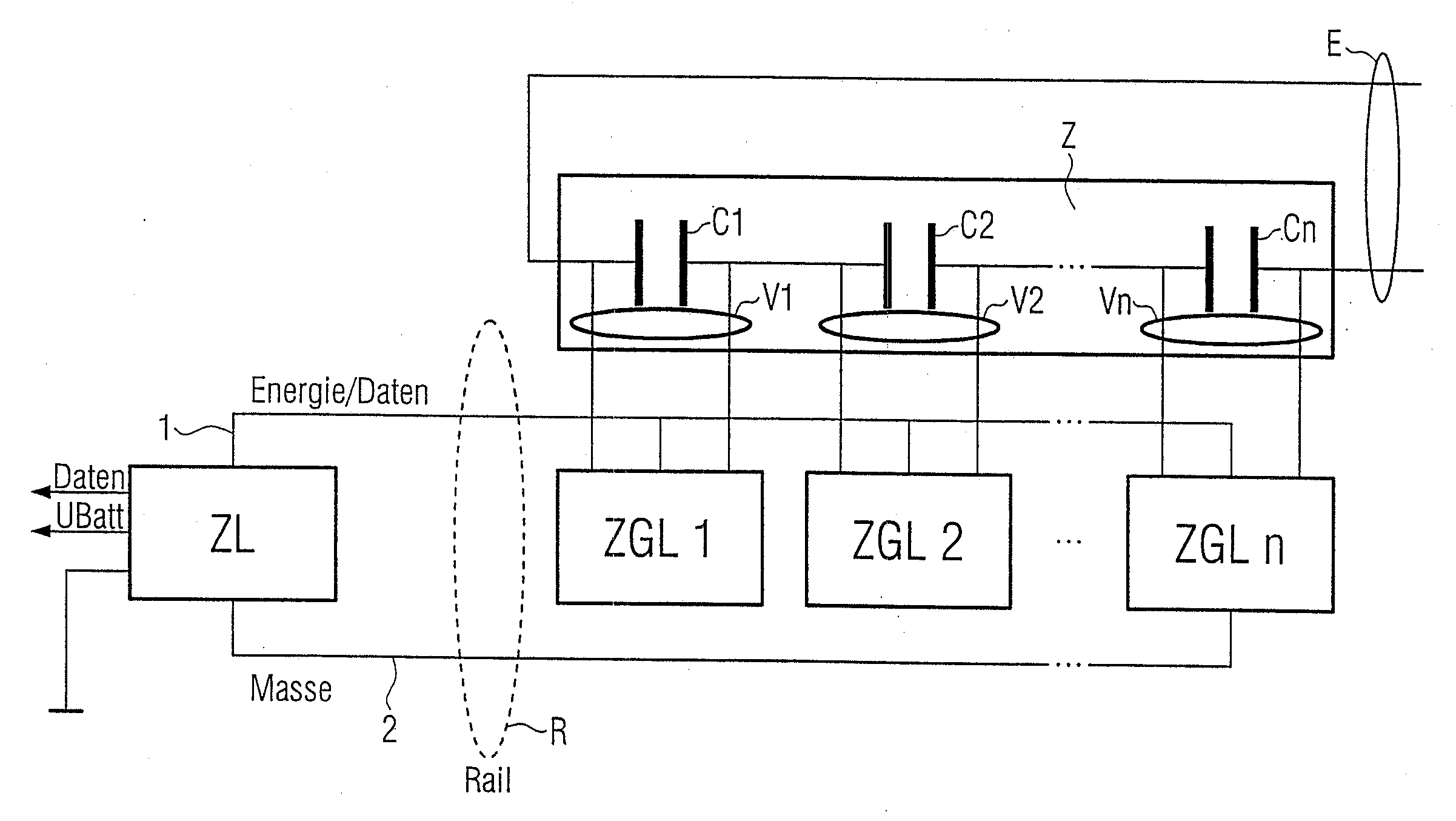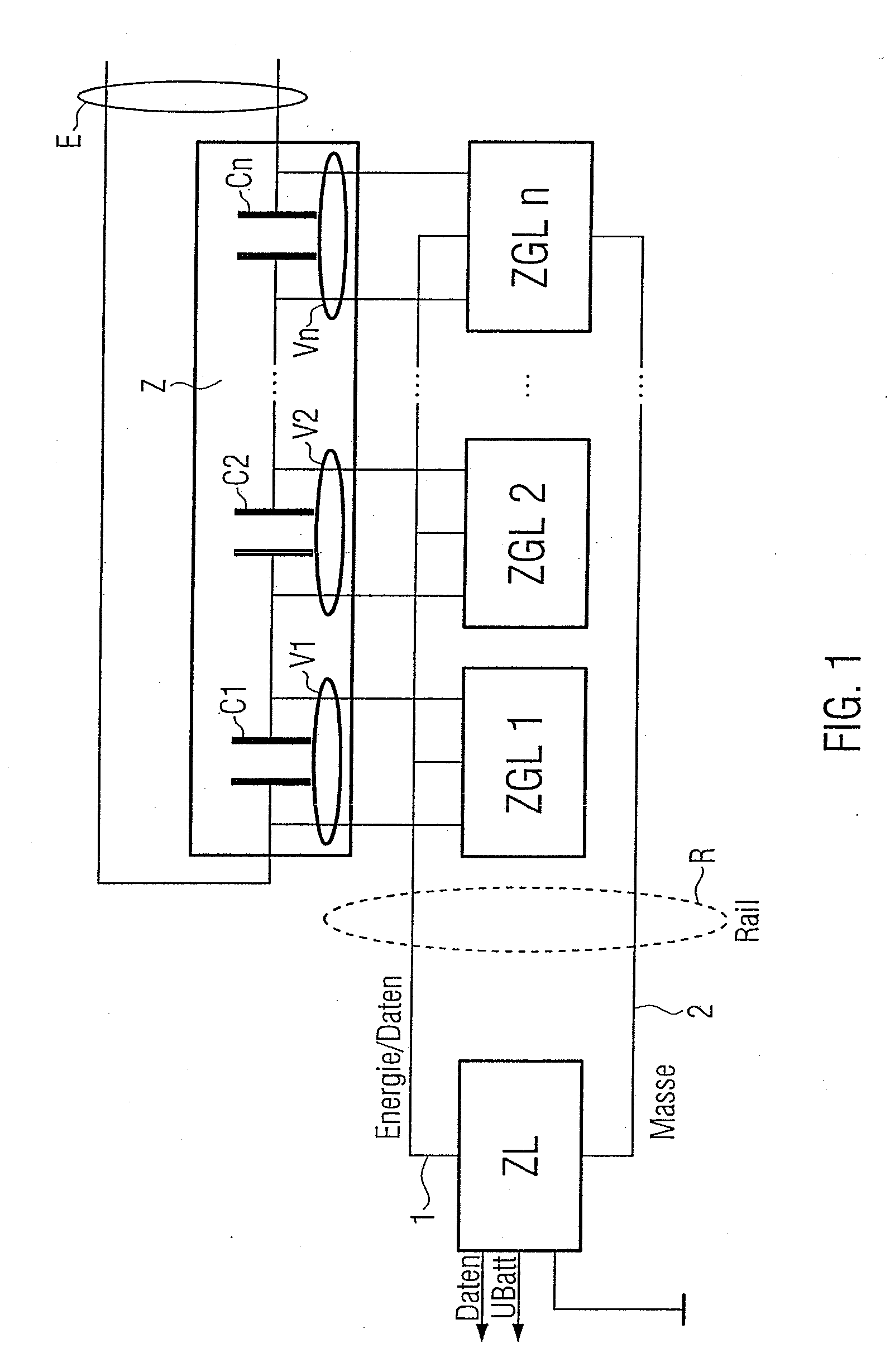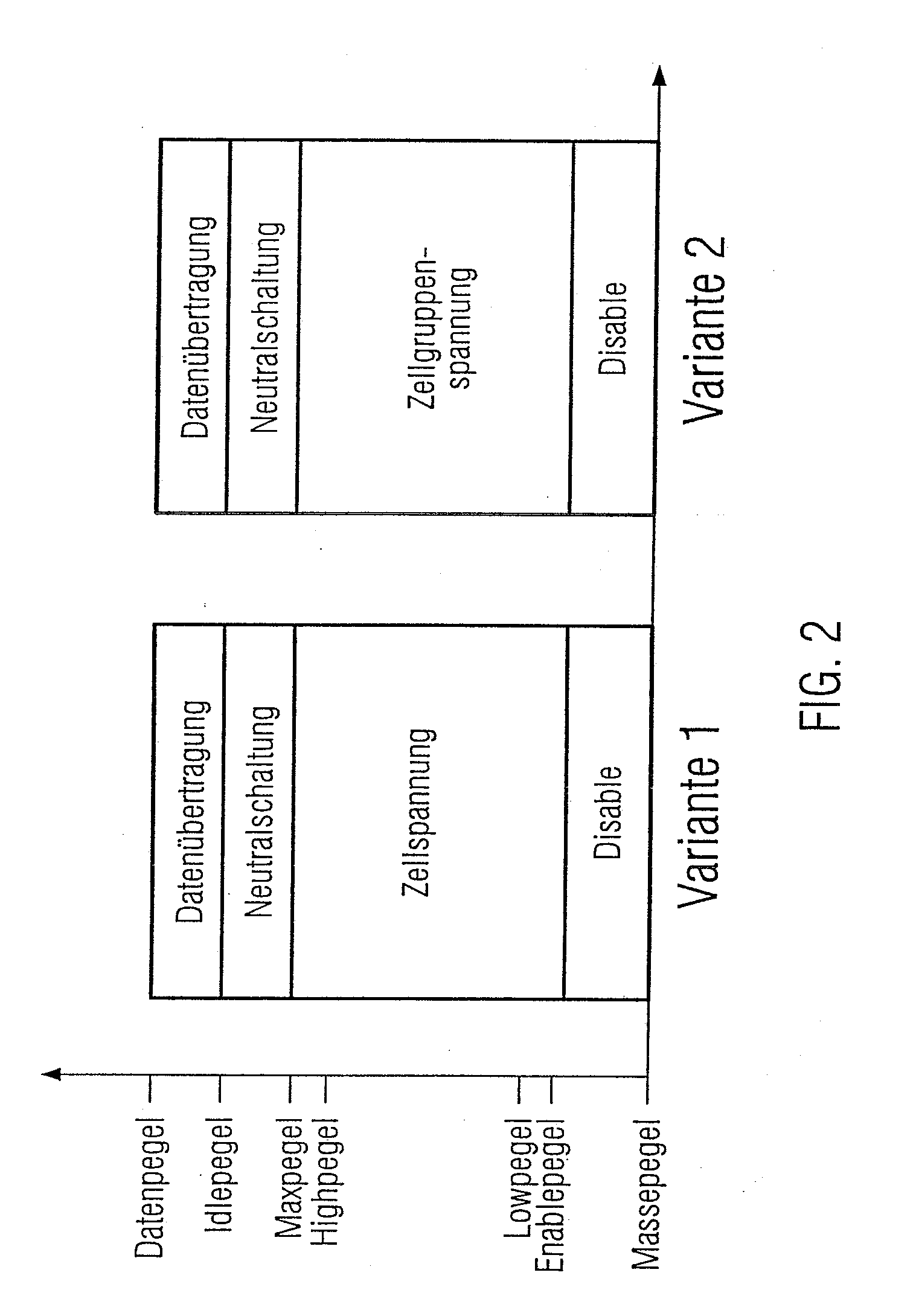Method of Monitoring and/or Controlling or Automatically Controlling the Voltage of at Least One Group of Cells in a Compound of Cells of an Energy Storage Device
a technology of energy storage device and cell compound, which is applied in the direction of secondary cell servicing/maintenance, electrochemical generator, transportation and packaging, etc., can solve the problems of increased wiring expenditure, inability to control, and increased susceptibility to faults, so as to prevent the destruction or damage of individual cell groups
- Summary
- Abstract
- Description
- Claims
- Application Information
AI Technical Summary
Benefits of technology
Problems solved by technology
Method used
Image
Examples
Embodiment Construction
[0032]FIG. 1 illustrates a preferred embodiment of the physico-technical construction of the system for implementing the method according to the invention. The system is implemented, for example, in a vehicle not shown here. In FIG. 1, several cells C1, C2, . . . Cn are connected in series in a cell compound Z. The cell compound Z is connected to the onboard energy supply system E of the vehicle and is used for providing energy, mainly in the case of hybrid vehicles. The cells C1 to Cn advantageously are double-layer capacitors. Each cell C1 to Cn of the cell compound Z is connected with a respective cell group logic ZGL1, ZGL2, . . . , SGLn.
[0033]In FIG. 1, the system is further developed such that each cell C1 to Cn forms a group of cells which is connected with its own cell group logic. The cell group logics ZGL1, ZGL2, . . . , ZGLn are connected with a rail line R which has a conductor 1 for energy / data and a grounding conductor 2. The rail line R is connected with a higher-rank...
PUM
 Login to View More
Login to View More Abstract
Description
Claims
Application Information
 Login to View More
Login to View More - R&D
- Intellectual Property
- Life Sciences
- Materials
- Tech Scout
- Unparalleled Data Quality
- Higher Quality Content
- 60% Fewer Hallucinations
Browse by: Latest US Patents, China's latest patents, Technical Efficacy Thesaurus, Application Domain, Technology Topic, Popular Technical Reports.
© 2025 PatSnap. All rights reserved.Legal|Privacy policy|Modern Slavery Act Transparency Statement|Sitemap|About US| Contact US: help@patsnap.com



